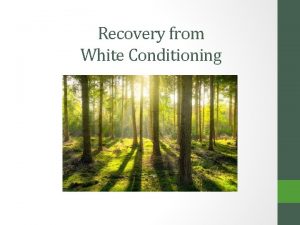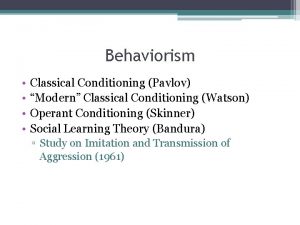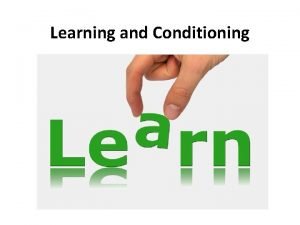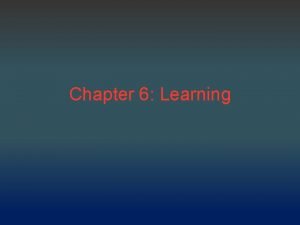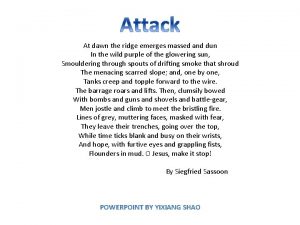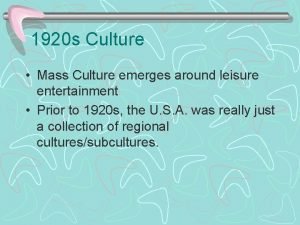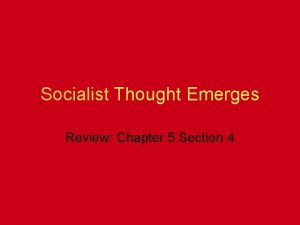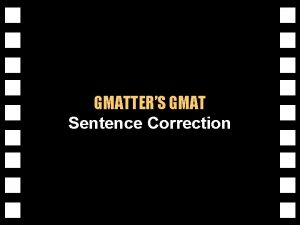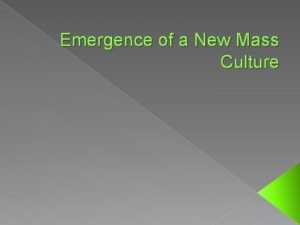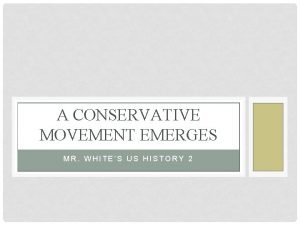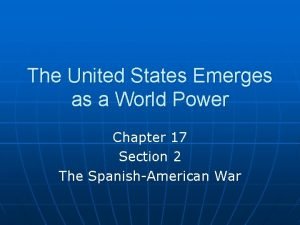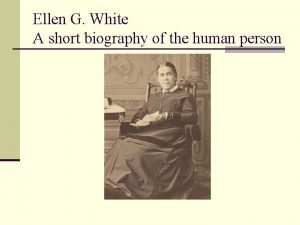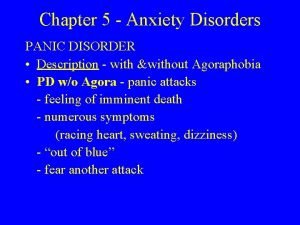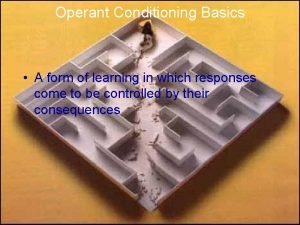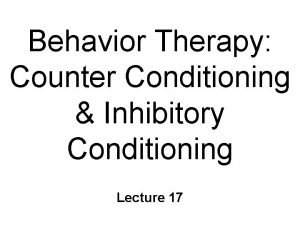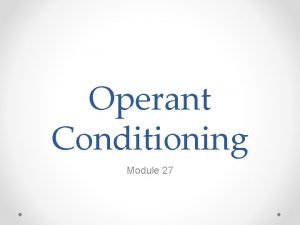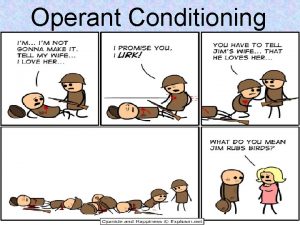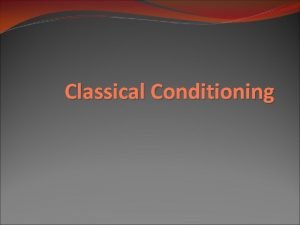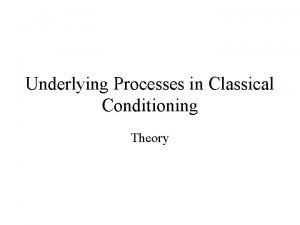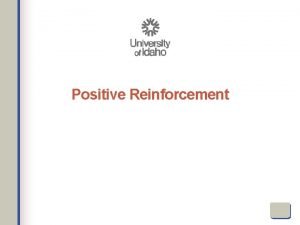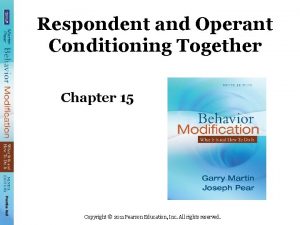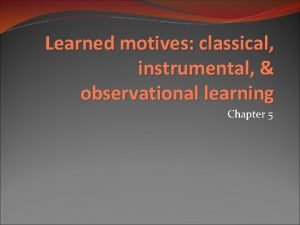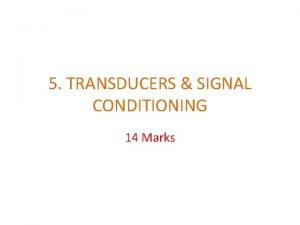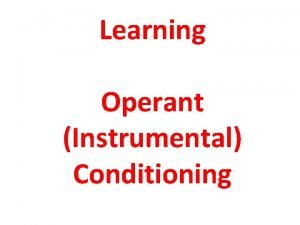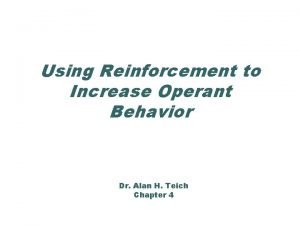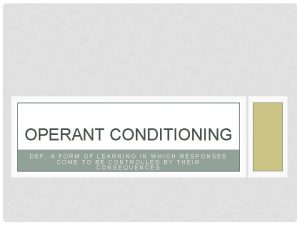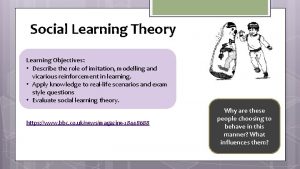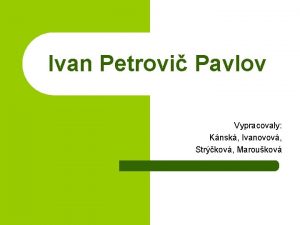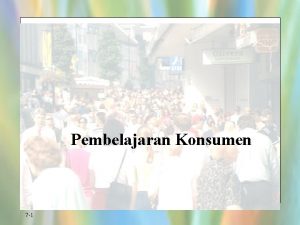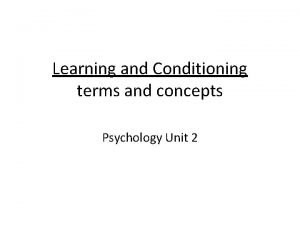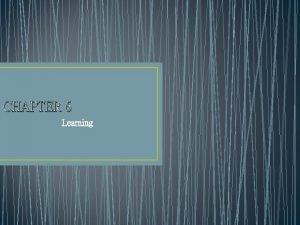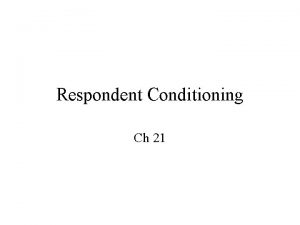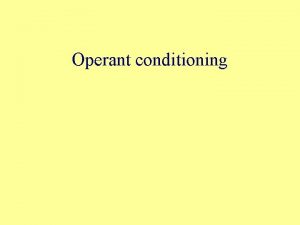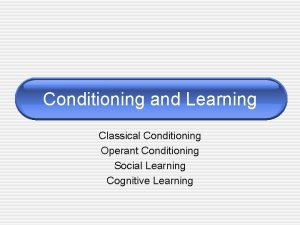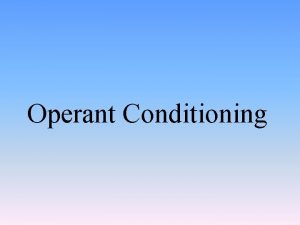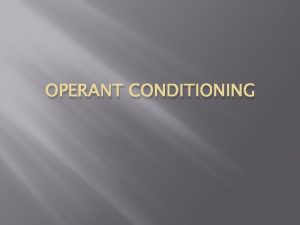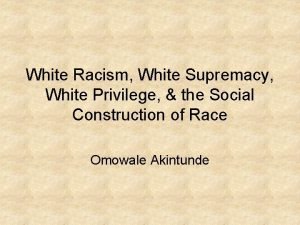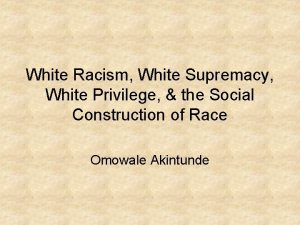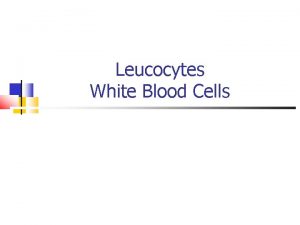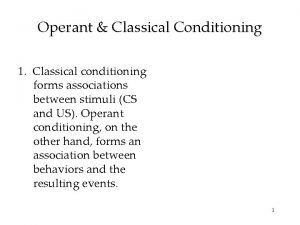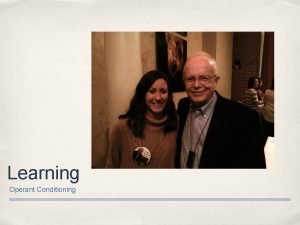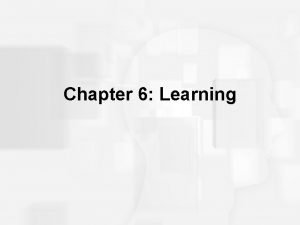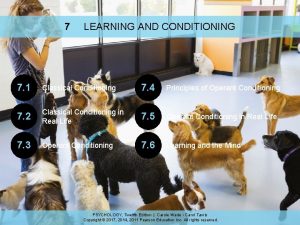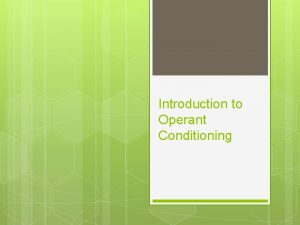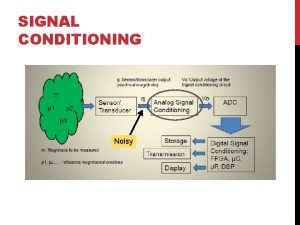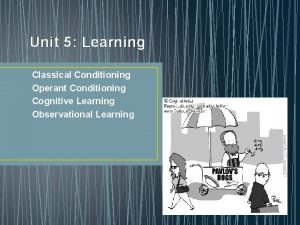Recovery from White Conditioning RECOVERY Recovery emerges from


















































- Slides: 50

Recovery from White Conditioning


RECOVERY Recovery emerges from hope Recovery is person-driven Recovery occurs via many pathways Recovery is holistic Recovery is supported by peers and allies Recovery is supported through relationship and social networks Recovery is culturally-based and influenced Recovery is supported by addressing trauma Recovery involves individual, family, and community strengths and responsibility Recovery is based on respect http: //store. samhsa. gov/shin/content//PEP 12 RECDEF/PEP 12 -RECDEF. pdf


Outline of Our Time Together • Welcome, Agreements, and Definitions • Centering Wisdom from BIPOC voices (BIPOC=Black, Indigenous, People of Color) • Overview of this Recovery Model/12 Steps

Being in this Space Together Agreements, from Vanessa Jackson, LCSW • Speak your truth…but hold my heart while you do it. • Accept that the feelings and issues raised will need to be continued. • We all share responsibility for creating safe enough spaces. • Respect that we are at different levels of development on these issues. We need to be creative and patient in holding our container to include a variety of experiences. Agreements for Courageous Conversations, Glenn Singleton • Stay engaged. • Experience discomfort. • Speak your truth. • Expect and accept non-closure.

What comes to mind… …when you hear the term “White Supremacy”?

The face of White Supremacy

The face of White Supremacy

The face of White Supremacy

Definition of White Supremacy • an historically based, institutionally perpetuated system of exploitation and oppression of continents, nations, and peoples of color by white peoples and nations of the European continent, for the purpose of maintaining and defending a system of wealth, power, and privilege. • a system, a web of interlocking, reinforcing institutions: economic, military, legal, educational, religious, and cultural. As a system, white supremacy affects every aspect of life in a country. http: //soaw. org/index. php? option=com_content&view=article&id=482

Definition of White Supremacy • White supremacy is ever present in our institutional and cultural assumptions that assign value, morality, goodness, and humanity to the white group while casting people and communities of color as worth less, immoral, bad, inhuman and "undeserving. “ • http: //www. dismantlingracism. org/racism-defined. html White Supremacy: Centering of Whiteness as NORMAL, RIGHT, and GOOD

bell hooks: “imperialist white supremacist capitalist patriarchy” the power structure underlying the social order

“The nation is sick. Trouble is in the land. Confusion all around. ” –Dr. MLK Jr.


“The plague of racism is insidious, entering into minds as smoothly and quietly and invisibly as floating airborne microbes enter into bodies to find lifelong purchase in bloodstreams. ”


Dr. Alvin Poussaint, Psychiatry Professor • After several racist killings in the civil rights era, a group of black psychiatrists sought to have extreme bigotry classified as a mental disorder. The association's officials rejected the recommendation, arguing that because so many Americans are racist, even extreme racism in this country is normative—a cultural problem rather than an indication of psychopathology.

Audre Lorde “When people of colour are expected to educate white people as to their humanity… the oppressors maintain their position and evade their responsibility for their own actions. ”


Prayer for the white man: “And now, Grandfather, I ask you to bless the white man. He needs your wisdom, your guidance. You see, for so long he has tried to destroy my people, and only feels comfortable when given power. Bless them, show them the peace we understand; teach them humility. For I fear they will someday destroy themselves and their children, as they have done so Mother Earth. I plead, I cry, after all, they are my brothers…” -Native American Indian

Origins of this 12 Step Model • BA and MSW Education: limitations in learning/training; inhome family therapy dreams of an alternate universe • Ta-Nehisi Coates: https: //www. youtube. com/watch? v=Pm 9 DJu. Tr. O 8 Q • 2015, 2016, 2017: MN’s Racial Disparities: http: //247 wallst. com/special-report/2015/12/07/worst-states -for-black-americans-2/4/ • Blessings from mentors + SPARC grant, IASWG

The 12 Steps A derivative work of Alcoholics Anonymous’ 12 Step Model

Step 1 • We admitted that we had been socially conditioned by the ideology of white supremacy—that our minds were subject to racial biases, often unconsciously so. • The first step to any kind of recovery is admitting that we have a problem. Individuals not ready to acknowledge a problem may be unable to pursue and receive the help they need. Becoming aware of a problem—and admitting it to others— can be challenging, but it is a fundamental step on the recovery journey.

Step 1 • https: //www. youtube. com/watch? v=Rfpo-g. UDSu. E

Step 2 • We came to believe that we could embrace our ignorance as an invitation to learn. • We acknowledge that we, as white people, will never know what it feels like to walk in the world as a person of color. We embrace our “not knowing” as a powerful reminder of our ongoing need for new learning, and we abandon white supremacist traditions of “knowing” how others should feel, think, and act.


Step 3 • We developed support systems to keep us engaged in this work. • We are aware that facing and recovering from the effects of white conditioning will involve difficult, sometimes painful, moments. We commit to developing practices that facilitate self-care…to ensure that we are gentle with ourselves while also bravely able to confront the dehumanizing ideology of white supremacy.


Step 4 • We journeyed boldly inward, exploring and acknowledging ways in which white supremacist teachings have been integrated into our minds and spirits. • After acknowledging the problem, we must also acknowledge that it has impacted many areas of our lives, consciously and unconsciously. Each of us must explore ways, past and present, in which the ideology of white supremacy has negatively impacted us: our understanding of history, our social networks, and our patterns of interacting with people of color, with an emphasized focus on microaggressions.

Microaggressions • Wing Sue and his colleagues identify three types: • 1. A microinsult is characterized by communications that convey rudeness and insensitivity and demean a person’s racial heritage or identity (for example, eye rolling during a discussion about an individual’s racial identity). • 2. Microinvalidations are communications that exclude, negate or nullify the psychological thoughts, feelings, or experiential reality of a person of color. An example is a white person stating to a person of color that they “don’t see color”, which denies that person’s racial and ethnic experiences. • 3. A microassault is an explicit racial derogation characterized primarily by a verbal or nonverbal attack meant to hurt the intended victim. This can happen through name-calling, avoidant behavior, or purposeful discriminatory actions. Microassaults are typically more conscious and deliberate than other forms of microaggression. • http: //www. extension. umn. edu/family/cyfc/ourprograms/ereview/docs/cmhereview. Oct 10. pdf

Step 5 • We confessed our mistakes to ourselves and others. • Beyond identifying ways in which our thinking, feeling, and relating have been impacted by white conditioning, honestly addressing the actions that have emerged from that conditioning is a separate, necessary step. Confessing past (and ongoing) microaggressions to a group and receiving support is an essential part of recovery.


Step 6 • We were entirely ready to deconstruct previous ways of knowing, as they had been developed through the lens of white supremacy. • After admitting these problems (white conditioning and related actions), it is then time to let go of “knowledge” developed in isolation from people of color.


Step 7 • We humbly explored new ways of understanding…proactively seeking out new learning and reconstructing a more inclusive sense of reality. • This step involves mindfully and intentionally engaging in learning to more deeply understand the experience of people of color in a society organized around white supremacy. This type of learning can take place in a variety of ways, including: reading texts written by people of color, actively listening to the experiences of people of color, patronizing businesses owned by people of color, etc.

Reconstructing a more inclusive sense of reality • • • http: //www. hmongchamber. com/ http: //www. blacktwincities. com/black-business-directory/ http: //www. ledc-mn. org/ http: //aeds-mn. org/category/little-africa-of-minnesota http: //www. maicnet. org/ • Recommended Authors (endless options) • • • Ta-Nehisi Coates Audre Lorde Gish Jen Chimamanda Adichie Gloria Anzaldua

Step 8 • We committed ourselves to ongoing study of our racial biases, conscious or unconscious, and our maladaptive patterns of white supremacist thinking. • This step is about identifying our triggers to negative thoughts (or other stereotypes, positive or negative) about people of color. We remain curious about the source of our thoughts, fears, and assumptions…and perpetually aware of their existence.

Situation or Trigger Automatic Negative Thought Distress (0 -100%) Monday Tuesday Wednesday Thursday Friday Saturday Sunday

Step 9 • We developed strategies to counteract our racial biases. • Developing positive associations to counter negative thoughts is an important, proactive strategy in recovery from white supremacy. We believe that the most powerful way to develop positive associations is to develop authentic relationships with people of color. In lieu of such relationships, we can still engage in daily, proactive practices to retrain our brain from the ill-effects of white supremacist conditioning.


Step 10 • We embraced the responsibility of focusing on our impact, more than our intentions, in interactions with people of color. • Taking responsibility for the impact of our actions is an ongoing part of recovery. If we fall back into perpetuating white supremacist ideology—or defending actions that have caused hurt to people of color—it's important to stop and admit it. Prioritizing impact, instead of explaining the intent of our behavior (i. e. “I didn’t mean to offend you”), is essential for attending to the human being in front of us.

Intentions: Province of the Privileged

Step 11 • We engaged in daily practices of self-reflection. • Reflecting on the day—on moments in which we confronted our own white supremacist conditioning and on moments in which we were still bound by its limiting beliefs—is an investment in our recovery. Relevant spiritual practices may play a helpful role in this step, as a way to encourage us toward continued growth and connection, beyond our mistakes.


Step 12 • We committed ourselves to sharing this message with our white brothers, sisters, and siblings…in order to build a supportive recovery community and to encourage personal accountability within our culture. • Assisting others to seek help in recovering from white conditioning and in becoming an ally with people of color is a core component of recovery. Working with future recoveryfrom-white-conditioning groups is a common choice for this step.


Meeting Structure/Rituals • Call to Recovery: “We are here to be fully human to ourselves, fully accountable to each other. ” (credit: Shailja Patel, author of Migritude) • Welcome & Introductions • Announcements, calendar, etc. • Minute of silence; quick reading about a white anti-racist • Read aloud the 12 steps. • Focus of today: Step __ Reading + uninterrupted time to speak (or pass) • Closing and repeating of Call to Recovery • Post-meeting Dialogue (back and forth!)

Call to Recovery “We are here to be fully human to ourselves… fully accountable to each other. ” -Shailja Patel, cr. author of Migritude

Next Steps • Your presence here today You=Trusted Servant • Freedom to apply these concepts in your life/work/community • Current website: recoveryfromwhiteconditioning. com • All materials downloadable for free: use on your own or start your own recovery group. • Contact Info, if you have follow-up questions: cristinacombs@gmail. com • Weekly Group: Wednesdays from 6 -7 pm on Zoom
 Recovery from white conditioning
Recovery from white conditioning Operant conditoining
Operant conditoining Classical conditioning vs operant conditioning
Classical conditioning vs operant conditioning The albert experiment
The albert experiment Classical conditioning v. operant conditioning
Classical conditioning v. operant conditioning Operant conditioning classical conditioning
Operant conditioning classical conditioning Classical and operant conditioning
Classical and operant conditioning Classical vs operant conditioning
Classical vs operant conditioning Operant conditioning vs classical conditioning
Operant conditioning vs classical conditioning Classical and operant conditioning differences
Classical and operant conditioning differences Classical conditioning vs operant conditioning
Classical conditioning vs operant conditioning At dawn the ridge emerges massed and dun
At dawn the ridge emerges massed and dun Modern america emerges
Modern america emerges Modern mass culture emerges leisure
Modern mass culture emerges leisure Socialist thought emerges
Socialist thought emerges Since 1981 when the farm depression began
Since 1981 when the farm depression began Modern mass culture emerges leisure
Modern mass culture emerges leisure A conservative movement emerges
A conservative movement emerges At dawn the ridge emerges massed and dun
At dawn the ridge emerges massed and dun United states acquisitions and annexations 1857-1904
United states acquisitions and annexations 1857-1904 Henry nichols white
Henry nichols white Nnn poem
Nnn poem Classical conditioning panic disorder
Classical conditioning panic disorder Operant conditioning
Operant conditioning Mary cover jones counterconditioning
Mary cover jones counterconditioning Classical conditioning in teaching
Classical conditioning in teaching Edward thorndike puzzle box
Edward thorndike puzzle box Operant conditioning types
Operant conditioning types Classical conditioning reflex
Classical conditioning reflex Cooling load software
Cooling load software Preparatory response theory example
Preparatory response theory example Contrived free operant observation
Contrived free operant observation Respondent and operant conditioning
Respondent and operant conditioning Trane centrifugal chiller economizer
Trane centrifugal chiller economizer Strength and conditioning for cricket
Strength and conditioning for cricket Learned motives
Learned motives Rtd signal conditioning
Rtd signal conditioning Define primary and secondary transducer
Define primary and secondary transducer Variable reinforcement schedule
Variable reinforcement schedule Automotive heating and air conditioning 8th edition
Automotive heating and air conditioning 8th edition Generalization classical conditioning
Generalization classical conditioning Thinning operant conditioning
Thinning operant conditioning Fixed interval
Fixed interval Signal conditioning
Signal conditioning Strengths and weaknesses of social learning theory
Strengths and weaknesses of social learning theory Work hardening definition
Work hardening definition Classical conditioning adalah
Classical conditioning adalah Contoh iklan classical conditioning
Contoh iklan classical conditioning Pavlov dogs
Pavlov dogs Instrumental learning vs classical conditioning
Instrumental learning vs classical conditioning Thermoacoustic
Thermoacoustic
